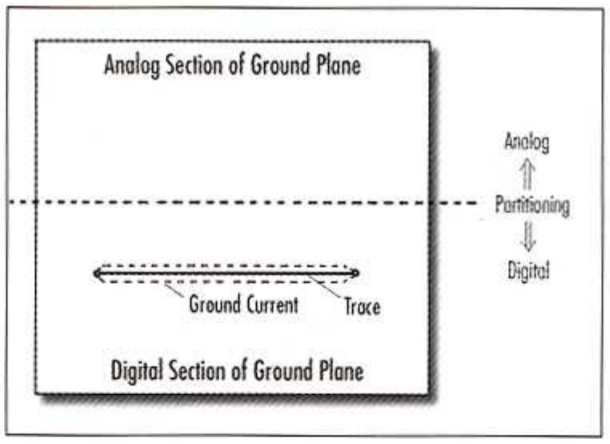My question is, where do you draw the line between using a single
plane in vs designing the ground planes?
I don't; I keep the planes as continuous as possible and almost never use slots - they are bad for a few reasons which I will describe. I manage the return currents with the placement of components.
Once, I had a return current running through a sensitive analog section, and it was causing my signal to shift by 10%. The source was from a circuit 'above' the analog section; the path of the return current on the grounding plane needed to change. There are two options:
1) Put a slot in the board and redirect the return current around the section that I wanted to protect.
2) Rearrange the components

I went with option 1 because I didn't have time to rearrange the board, but slots have consequences. Option 2 would have avoided the use of a slot, the slot was short anyway, and I didn't need to run any traces across it.
In most cases good PCB layout can avoid the use of slots entirely, by managing the return currents. Slots are bad: they turn the PCB into an unintentional radiator by creating slot antennas and dipole antennas.
The other problem with slots and partitioning the board with split planes is that running traces over them can create noise and lower the impedance of a trace (the return current for a high speed signal follows underneath the trace).
A good board layout will divide the sensitive sides from the noisy sides with physical layout and keep the planes continuous.

Source: https://www.autodesk.com/products/eagle/blog/everyday-app-note-successfully-design-mixed-signal-pcb-partitioning/
For example, when frequency is above a certain threshold, or a certain
amount of sensitivity is needed, or a specific amount of power being
dumped to ground?
The power dumped to ground will take the shortest path of impedance back to the source. For high speed signals this can be different than DC, and usually follows underneath the high speed trace or as close as possible.
And typically what sort of benefits does split ground give you over a
single? Less noise? more stable?
I can't see a benefit over proper layout. If you do have a grounding problem, the first thing to do is find out if it's a layout or common mode noise problem (with a cable for example). The problem with split planes / slots is running traces over them creates problems with the return current. The other problem is unintentional radiating, however a lot of SMPSs are shielded with a case anyway so this may not be a problem if you're planning on shielding.
Henry Ott in the book Electromagnetic Compatibility Engineering (I would suggest getting the book, though a similar article is available here) says this about split planes:
14.4 WHEN SHOULD SPLIT GROUND PLANES BE USED?
Should split-ground planes ever be used? I can think of at least three
instances where they would be appropriate. The instances are as
follows:
- Some medical equipment with low leakage current requirements (10uA)
- Some industrial process control equipment where the outputs are connected to noisy, high-power electromechanical equipment
- Possibly when a PCB is improperly laid out to begin with




